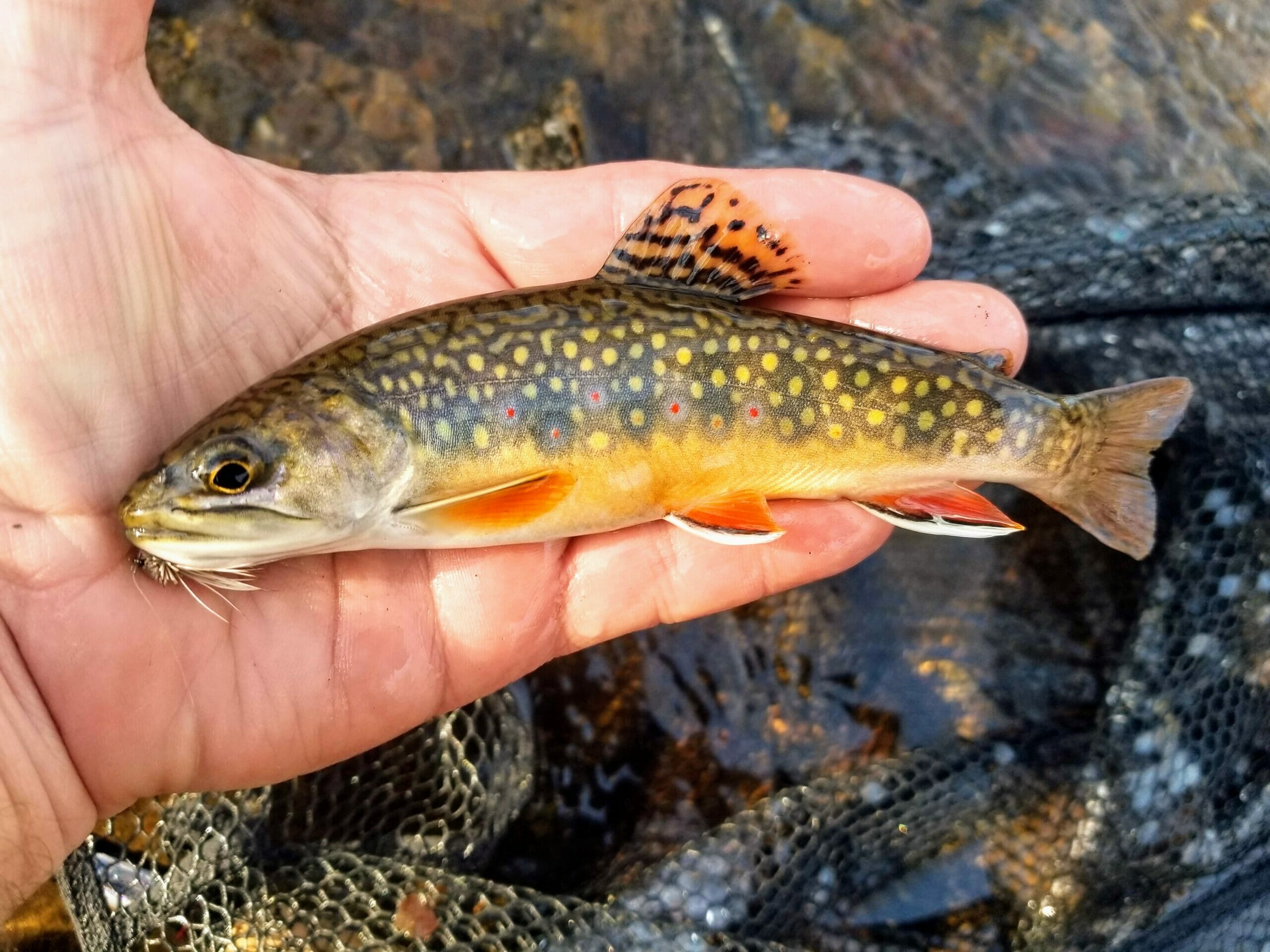Scientists and anglers are sleuthing for groundwater sources that may help Garden State trout weather climate change
Before joining the Trout Unlimited staff, Keith Fritschie spent four Octobers swimming with giant wild brook trout in northern New Hampshire’s Dead Diamond River. The work was part of an Embrace-a-Stream collaboration between New Hampshire Fish and Game, Dartmouth College, and TU’s Ammonoosuc Chapter.
One of the goals was to determine the habitat needs of spawning brook trout. Like many before them, Fritschie and others involved in the research found that Dead Diamond brookies keyed in on patches of upwelling groundwater to incubate their eggs through winter. This information has helped Fritschie inform his work as TU’s Upper Delaware restoration coordinator in New Jersey.
We recently connected with Fritschie to learn more about the exciting trout-related work happening in the Garden State.
Q: Why is studying groundwater’s impact on trout streams so important in New Jersey?
New Jersey is hot and has gotten hotter at a faster rate than many other states over the past century. The long-term persistence of the Garden State’s wild trout fisheries will likely depend on access to cold, groundwater-influenced stream habitat. Forward-looking monitoring, restoration, and policy can help maintain this coldwater resource.
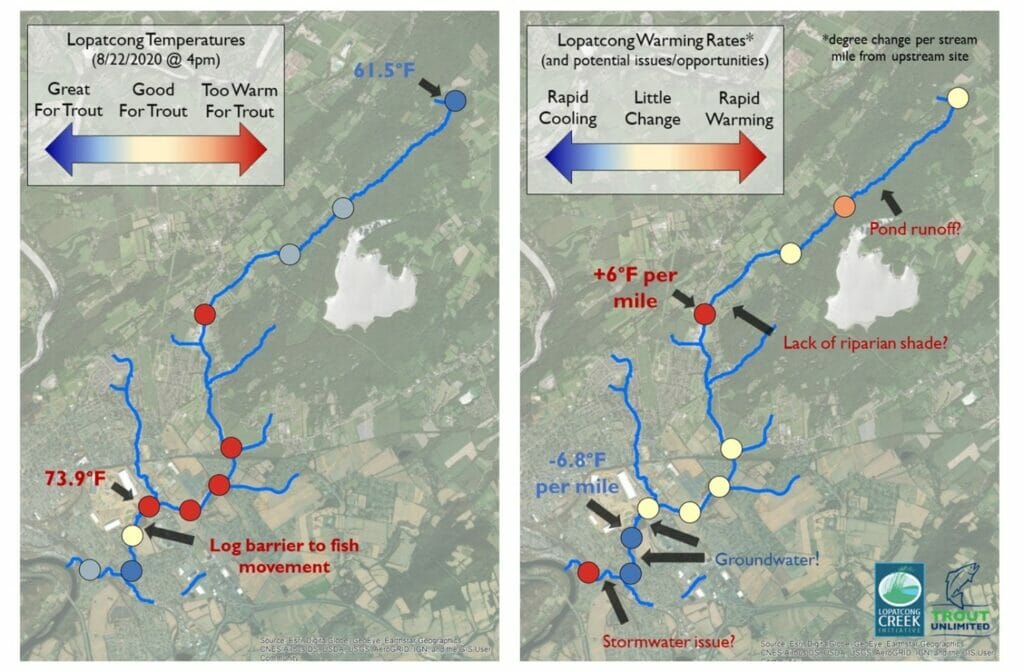
Groundwater inputs keep some stream reaches cool and flowing through even the hottest summers. In regions where streams regularly approach the thermal limits of trout population persistence, the quantity, quality, and accessibility of upwelling groundwater will be a major factor determining where stream temperatures will remain suitable for wild trout in the future.
Q: It makes sense that cold spring water is important in the summer. Why is it important in the colder months?
Groundwater provides spawning habitat in many wild salmonid waters by keeping eggs wet, ice-free, and thermally stable through the winter. Since temperature drives rates of egg development, stable, warm groundwater temperatures might also help ensure embryos have a chance to hatch and grow a bit before facing high flow conditions in late winter.
There’s still a lot to learn about how spawn timing and incubation temperatures interact to affect young trout’s early life experiences, especially as climate change jumbles up all aspects of this delicate relationship between temperatures, flows, and reproduction. This is ultimately important for trout populations because year class strength of fall-spawning resident trout can be tightly tied to the magnitude of antecedent late winter floods.
Q: Getting back to the threats of rising temperatures, just how dire is this threat to New Jersey trout populations?
New Jersey’s wild trout are currently at the thermal edge of their range, so you might not expect them to survive in a warming world. And, to date, regional models of brook trout persistence like USGS’s SHEDS model would agree with you. However, these types of models currently do not account for the thermal benefits of groundwater, a resource in no short supply in New Jersey’s limestone-rich northwestern corner.
To be useful for TU’s conservation planning, these models need to better reflect conditions on the ground.
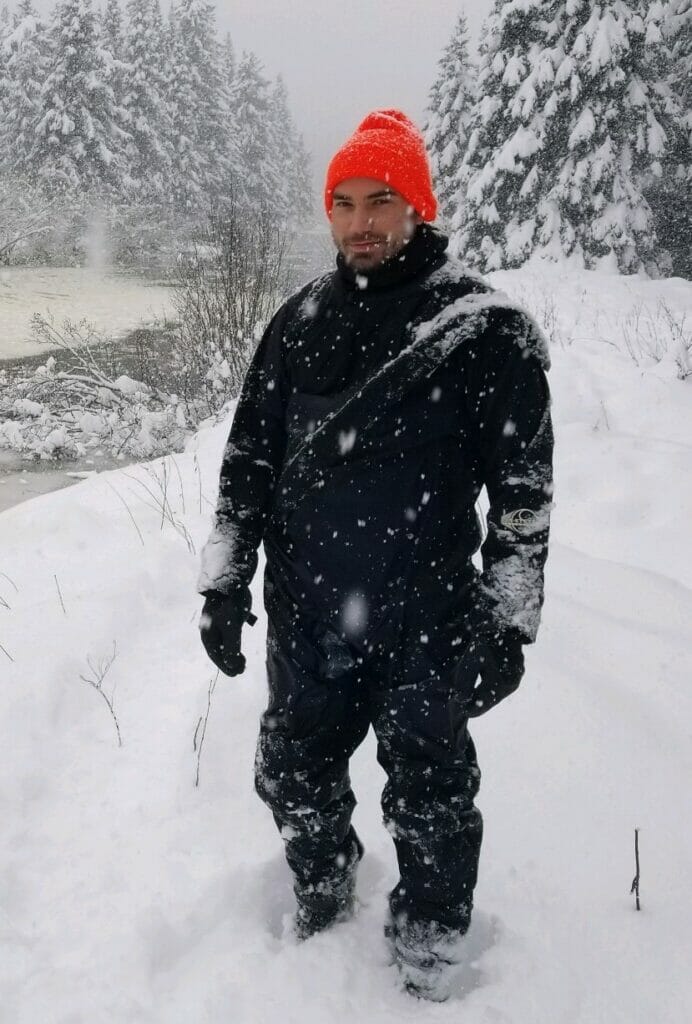
TU, the New Jersey Division of Fish and Wildlife, The Nature Conservancy, and the Musconetcong Watershed Association recently submitted temperature logger data from 250 sites across northern New Jersey to update the SHEDS model.
So far, the average modeled probability of trout survival in a warming northwestern New Jersey climate has increased by nearly sixfold because of our data contributions.
Beyond confirming local knowledge, these model improvements demonstrate to regional partners and funders that, thanks in large part to groundwater, many New Jersey wild trout waters have climate resilient bones to build on and are worthy of resource investment.
Q: How do you ensure that your temperature data account for variations within watersheds?
It’s true that many streams are naturally thermally diverse owing to features like groundwater seeps, forest cover, beaver meadows, deep pools, and incoming tributaries. Add to that complexity human impacts from poor stormwater management, small impoundments, wastewater discharge, and deforested riparian and upland areas, and it is easy to see that one temperature logger per stream or watershed cannot reflect a trout population’s true thermal experience.
So, the past two summers we have piloted a simple approach, deploying volunteer crews to collect single stream temperature readings at hundreds of sites.
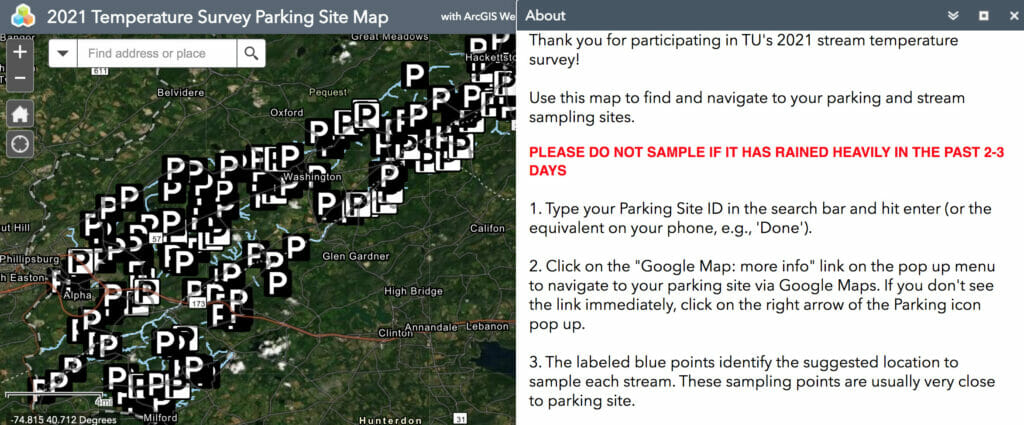
At first, we synchronized our sampling so that temperatures could be compared across space in the absence of variation due to time. Since then, we have developed methods to account for and remove time-driven temperature differences across sites. This allows volunteers to sample on any day that is convenient to them, which significantly expands the total number of sites we can sample.
Q: What do you do with all that information?
We can begin to address important planning questions. Where are temperatures good and population benefits from in-stream habitat work most likely? Which dams and deforested streambanks have the largest thermal impacts? Which dams and perched culverts block fish access to coldwater refuges?
Q: Do you have any good examples of that?
Lopatcong Creek is a notable example. From its preserved headwaters on Scotts Mountain, this stream flows 12 miles past residences, farms, golf courses, forested wetlands, permitted discharges, and through the town of Phillipsburg before emptying into the Delaware River.
The Lopat— a wild brook trout fishery in its headwaters grading to a wild brown (and stocked rainbow) fishery downstream—is the home water of TU’s Ridge and Valley Chapter and has been the focus of conservation efforts by partners like the Lopatcong Creek Initiative, North Jersey Resource Conservation and Development, and New Jersey Audubon.
However, New Jersey’s Department of Environmental Protection has noted a decline in wild brown trout abundance at their regular monitoring site over the past two decades. Moreover, continuous temperature data collected by LCI indicates that the middle Lopat has approached or exceeded the thermal limits of wild trout survival in several recent years.
Q: Doesn’t that indicate that the middle stretch of the Lopat is simply becoming too hot for its wild fish?
Our volunteer temperature sampling paints a much more optimistic picture. The Lopat warms slowly through its forested headwaters. Then, temperatures rise sharply in its middle reaches of residential, agricultural, and golf course development. However, temperatures actually decline rapidly—dropping as much as 20 degrees Fahrenheit—through the town of Phillipsburg. No significant tributaries enter this reach and riparian cover doesn’t change much. This extreme cooling is courtesy of upwelling groundwater and is providing climate resilient habitat for wild fish.
Q: So, what’s the problem?
During our sampling we found a small dam that disconnects downstream coldwater habitat from the middle reaches of the Lopat, which are warmer but still productive. It is possible that fish moving below this dam to escape thermally stressful summer conditions can’t easily move back up when the middle Lopat is suitable for trout, for example for shoulder season foraging and spawning. That is likely what is reducing the total abundance of trout in the middle reach through time, as has been observed.
Q: What’s the story behind this dam?
Some digging by our LCI partner revealed that this obstruction was built by a previous landowner about two decades ago. We hope to work with the new landowner to pull this small barrier, giving fish the opportunity to move easily among thermally diverse, seasonally productive habitat.
Q: Are you doing any other habitat-enhancing work on the Lopat?
Above this barrier we also recently implemented a 1.3-mile project to restore channel-floodplain connectivity, reduce fine sediment deposition, expand riparian buffers, and increase pool frequency where appropriate.
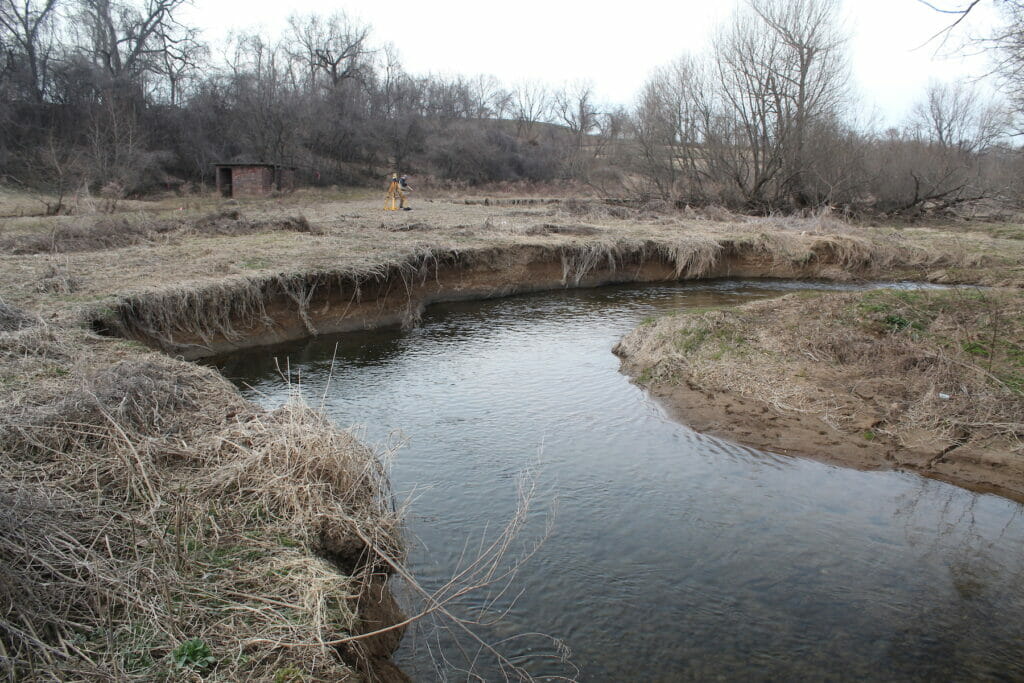
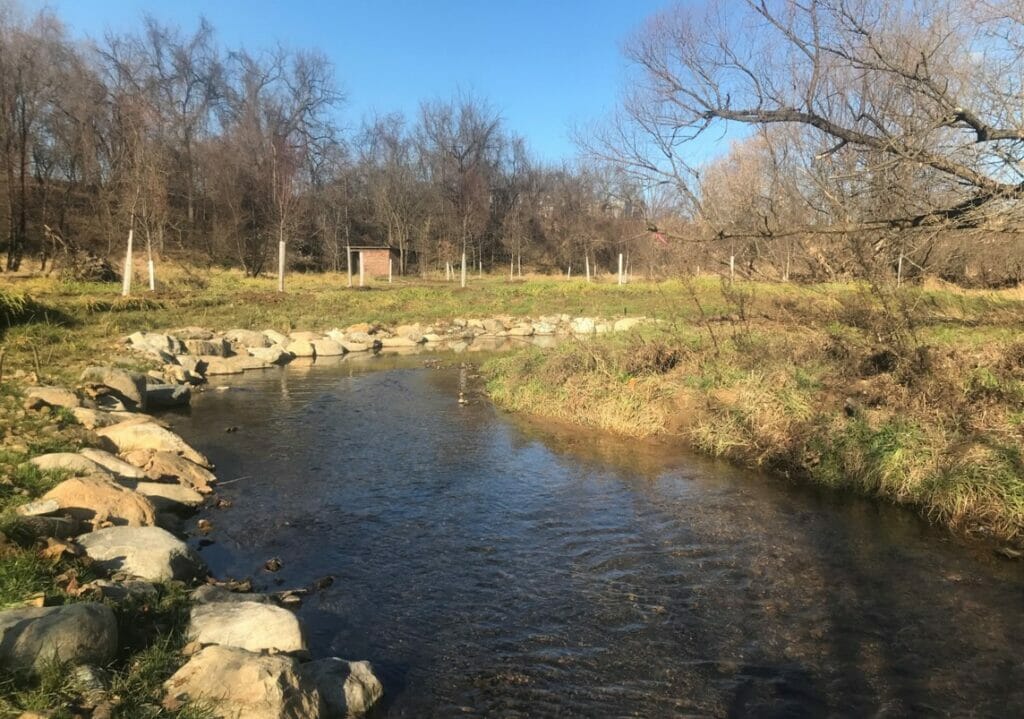
In part, we hope this effort will restore processes that promote groundwater-surface water interactions and increase stream shade, cooling this warm middle reach from both above and below.
We are collecting temperature data before and after project implementation to determine if and by how much traditional restoration techniques provide thermal relief in this reach.
Q: That sounds like a great project, but we know you can’t do that kind of work without financial support. Who are the key partners in the project?
Funding for this work comes from the National Fish and Wildlife Foundation, the William Penn Foundation’s Delaware River Watershed Initiative, Theodore Gordon Flyfishers, the F.M. Kirby Foundation, TU’s Embrace A Stream program, The Watershed Institute’s and The Nature Conservancy’s Roots for Rivers program, Drexel’s Academy of Natural Sciences, and in-kind materials donations from New Jersey Audubon and local developers.
Q: Other than trout and other stream-dwelling creatures that need cold, clean water, are there other beneficiaries of this kind of work?
TU and its partners are looking to the Lopat as an example of the importance of clean, abundant groundwater for surface water systems. New Jersey’s rules allow for higher pollutant levels in permitted discharges to groundwater than to surface water, except in regions of known significant interaction among groundwater and surface water.
However, the state’s Department of Environmental Protection has not interpreted these rules accordingly, permitting discharges to groundwater in karst regions adjacent to rivers. Permitting these also seems to contradict the precedent set by a recent U.S. Supreme Court ruling which requires the consideration of whether permitted discharges reaching surface water via groundwater are the functional equivalent of a direct discharge to surface water.
Q: Is there any effort to address these concerns?
The recently developed Great Waters Initiative is providing resources and starting conversations at the municipal, county, and state levels to brainstorm how to better protect groundwater for water supply, fish, and recreational economies in northwestern NJ. The Great Waters Initiative is William Penn Foundation-funded partnership among TU, the Musconetcong Watershed Association, the New Jersey Highlands Coalition, The Watershed Institute, the Association of New Jersey Environmental Commissions, and the Delaware River Greenway Partnership.
Q: What’s next for all of these efforts?
We hope that our growing evidence of the importance of groundwater to trout in streams like the Lopatcong brings a renewed perspective and new supporters to groundwater-related policy issues in New Jersey.
As development continues and demand for both clean water and places to dispose waste grows, TU and its partners must navigate a web of science, policy, and restoration opportunities and challenges to secure cold groundwater resources for freshwater fisheries into the future.



